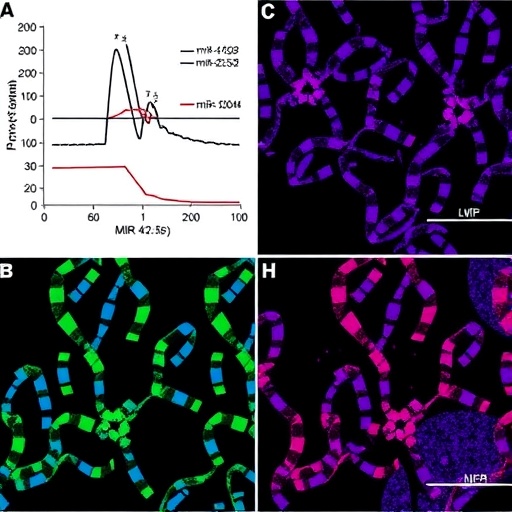PROTECT YOUR DNA WITH QUANTUM TECHNOLOGY
Orgo-Life the new way to the future Advertising by AdpathwayIn recent years, the quest for sustainable sources of biofuels has intensified, driven by the urgency to address climate change and reduce reliance on fossil fuels. A pioneering study by Eltoukhy, Mohamed, and Abo-Kadoum offers a promising avenue, focusing on the oleaginous soil fungus, Gongronella butleri HMA-10. This remarkable organism could become a beacon of hope in the sustainable lipid production landscape, illustrating the potential of fungi as biotechnological assets in the fight against environmental degradation.
Gongronella butleri is uniquely equipped to thrive in nutrient-poor and challenging environments, showcasing its resilience and adaptability. The research team meticulously characterized this fungus, highlighting its growth conditions, substrate preferences, and biological traits. Understanding these characteristics provides essential insights into optimizing its cultivation for lipid production, vital for creating a sustainable biofuel source.
The innovative methodology employed in this research emphasizes the statistical optimization of lipid production. By integrating statistical tools with biological data, the researchers were able to identify the most effective growth conditions that maximize lipid accumulation. This approach not only enhances the efficiency of lipid extraction but also opens new avenues for future studies aimed at optimizing other oleaginous microorganisms.
An intriguing aspect of the study is its focus on the composition of the lipids produced by Gongronella butleri. Unlike traditional sources of lipids, which often come from vegetable oils or animal fats, the lipids synthesized by this fungus present a unique profile. The research findings suggest that the lipids have potential applications not only in biofuels but also in the food and cosmetics industries, indicating a broad spectrum of utility.
One of the critical factors contributing to the viability of Gongronella butleri as a lipid source is its ability to convert various types of carbon sources effectively. Whether utilizing agricultural waste, lignocellulosic biomass, or other organic materials, this fungus demonstrates a remarkable capacity to transform even the most challenging substrates into valuable lipids. This capability is vital in promoting a circular economy and reducing waste.
Through rigorous experimentation, the researchers identified optimal fermentation parameters that significantly enhance lipid production. Factors such as temperature, pH, and nutrient concentrations were meticulously analyzed, leading to a robust understanding of the conditions that favor lipid biosynthesis. These insights are crucial for scaling up production processes, which is often a challenging step in biotechnological applications.
Moreover, the environmental implications of utilizing Gongronella butleri cannot be overstated. Conventional lipid sources often entail extensive land use, water consumption, and pesticide application. In stark contrast, using oleaginous fungi for lipid production can alleviate some of these environmental pressures by utilizing substrates that would otherwise be considered waste. This biotechnological innovation aligns seamlessly with global sustainability goals, making it a research area of immense relevance.
The research community has been increasingly acknowledging the significance of fungi in biotechnology, and the work of Eltoukhy and colleagues serves as a crucial reminder of this potential. As the world grapples with the impacts of climate change, the urgency of exploring alternative, sustainable sources of energy cannot be overstated. Gongronella butleri emerges as a viable candidate that contributes to this critical discourse.
Beyond the immediate benefits of lipid production, the insights gained from this study pave the way for future explorations into fungal biology and biotechnology. For instance, understanding the genetic and metabolic pathways that govern lipid accumulation could yield strategies for enhancing lipid yields in other oleaginous fungi or even engineered strains.
Furthermore, the interdisciplinary nature of the research underscores the importance of collaborative efforts in addressing global challenges. The integration of microbiology, statistics, and environmental science within this framework epitomizes the holistic approach needed to tackle complex issues like energy sustainability.
As the implications of this research unfold, several questions arise regarding the scalability and economic feasibility of utilizing Gongronella butleri for industrial applications. Future studies will need to address these aspects, ensuring that the transition from lab-scale findings to commercial viability is both practical and efficient.
In conclusion, the groundbreaking work conducted on Gongronella butleri HMA-10 reveals the immense potential of fungal species in sustainable lipid production. By harnessing the unique biological and metabolic capabilities of this oleaginous fungus, researchers are paving the way for innovative solutions to some of our most pressing environmental challenges. The journey toward sustainable biofuel production is not only a scientific endeavor but a vital quest for the health of our planet and future generations.
As we move forward, the research community must focus on translating these findings into actionable strategies that can be implemented in real-world contexts. The implications of these discoveries extend far beyond the laboratory, promising to influence energy policies, environmental practices, and even consumer choices, steering society towards a more sustainable future.
Subject of Research: Oleaginous soil fungus Gongronella butleri for sustainable lipid production
Article Title: Characterization and statistical lipid optimization of an oleaginous soil fungus, Gongronella butleri HMA-10: a promising novel source for sustainable lipid production
Article References:
Eltoukhy, A., Mohamed, H., Abo-Kadoum, M.A. et al. Characterization and statistical lipid optimization of an oleaginous soil fungus, Gongronella butleri HMA-10: a promising novel source for sustainable lipid production.
Int Microbiol (2025). https://doi.org/10.1007/s10123-025-00718-8
Image Credits: AI Generated
DOI: https://doi.org/10.1007/s10123-025-00718-8
Keywords: Gongronella butleri, sustainable lipid production, oleaginous fungi, biofuels, environmental sustainability, lipid optimization


 14 hours ago
7
14 hours ago
7





















 English (US) ·
English (US) ·  French (CA) ·
French (CA) ·